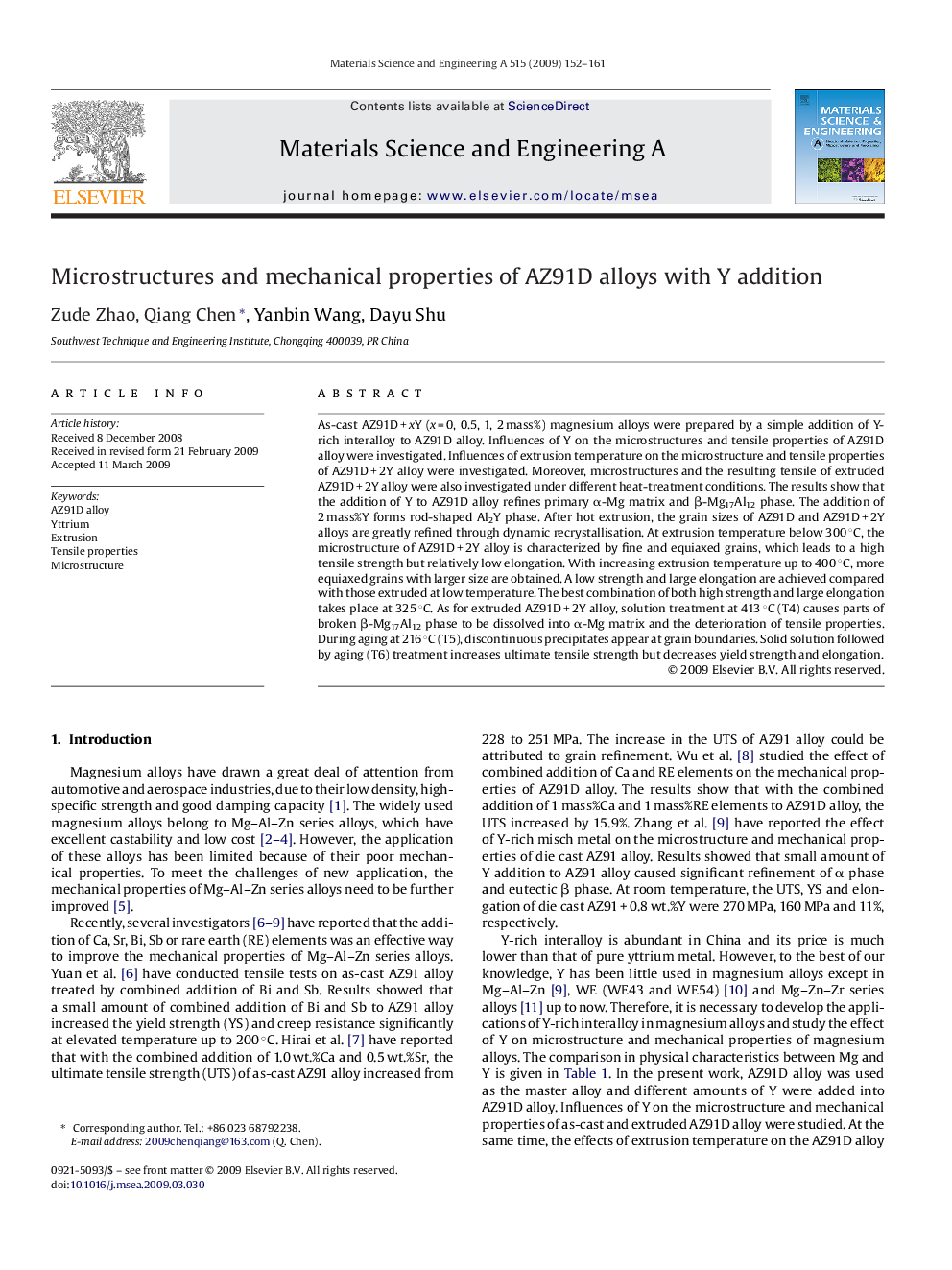| Article ID | Journal | Published Year | Pages | File Type |
|---|---|---|---|---|
| 1580536 | Materials Science and Engineering: A | 2009 | 10 Pages |
Abstract
As-cast AZ91D + xY (x = 0, 0.5, 1, 2 mass%) magnesium alloys were prepared by a simple addition of Y-rich interalloy to AZ91D alloy. Influences of Y on the microstructures and tensile properties of AZ91D alloy were investigated. Influences of extrusion temperature on the microstructure and tensile properties of AZ91D + 2Y alloy were investigated. Moreover, microstructures and the resulting tensile of extruded AZ91D + 2Y alloy were also investigated under different heat-treatment conditions. The results show that the addition of Y to AZ91D alloy refines primary α-Mg matrix and β-Mg17Al12 phase. The addition of 2 mass%Y forms rod-shaped Al2Y phase. After hot extrusion, the grain sizes of AZ91D and AZ91D + 2Y alloys are greatly refined through dynamic recrystallisation. At extrusion temperature below 300 °C, the microstructure of AZ91D + 2Y alloy is characterized by fine and equiaxed grains, which leads to a high tensile strength but relatively low elongation. With increasing extrusion temperature up to 400 °C, more equiaxed grains with larger size are obtained. A low strength and large elongation are achieved compared with those extruded at low temperature. The best combination of both high strength and large elongation takes place at 325 °C. As for extruded AZ91D + 2Y alloy, solution treatment at 413 °C (T4) causes parts of broken β-Mg17Al12 phase to be dissolved into α-Mg matrix and the deterioration of tensile properties. During aging at 216 °C (T5), discontinuous precipitates appear at grain boundaries. Solid solution followed by aging (T6) treatment increases ultimate tensile strength but decreases yield strength and elongation.
Related Topics
Physical Sciences and Engineering
Materials Science
Materials Science (General)
Authors
Zude Zhao, Qiang Chen, Yanbin Wang, Dayu Shu,
